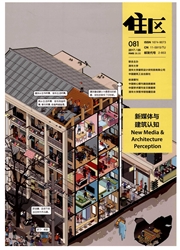

 中文摘要:
中文摘要:
研究以深圳蛇口为例,应用空间句法分析了两种类型的住区形态(居住街区与居住小区)形成的次级道路系统对城市局部与整体空间结构的影响及其与社区商业网点分布的关系。形态开放的居住街区更容易形成良好的城市步行网络环境和可达性,商业分布的密度和多样性反映了其空间与功能模式有利于促进社区活力的发展。研究成果对于思考我国以机动车路网为主导的城市规划方法下居住小区规划设计应采取的空间策略具有一定的意义。
 英文摘要:
英文摘要:
The study uses space syntax methodology to examine the relationship between urban layout morphologyand community vitality inShekou,Shenzhen.Two different types of neighborhood layout,namely street-based neighborhood and estate residential unit,are analyzed against the large urban context in order to evaluate how their different morphologies create various spatial accessibility patterns and how such patterns are related to community landuse distribution.The analysis reveals street-based neighborhood,due to its open connection with surrounding urban environment,is more likely to produce a community with better accessibility andpedestrian-friend urban network,whose spatial-functional pattern encourages vital urban activities characterized with dense and diverse commercial development.The results have an implication on the spatial planning strategies of China's existing urban planning system,namely,how to design residential units as local inserts of the super blockpattern of modern cities dominated by vehicular traffic circulation.
 同期刊论文项目
同期刊论文项目
 同项目期刊论文
同项目期刊论文
 期刊信息
期刊信息
